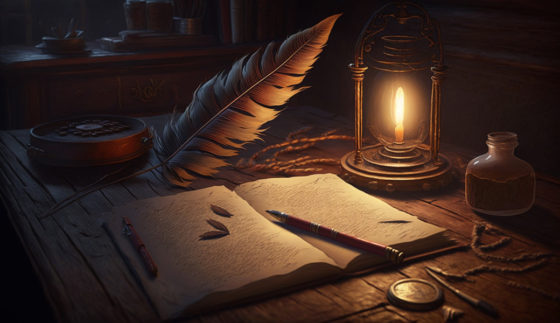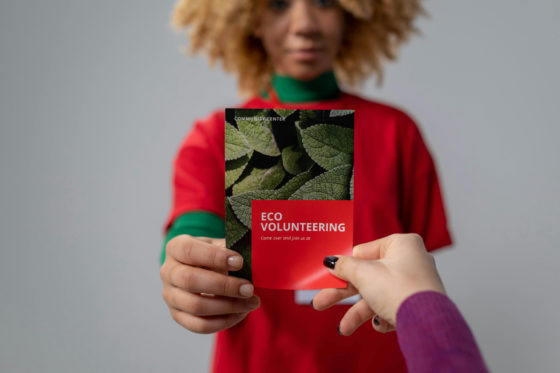| Table of Contents |
|---|
Did you know that the human brain processes visual information 60,000 times faster than text? In a world where first impressions are crucial, a well-designed leaflet can be the difference between being noticed or overlooked. This is precisely why mastering the art of leaflet design is more important than ever. Whether you’re promoting an event, launching a new product, or spreading awareness for a cause, a compelling leaflet can significantly amplify your message’s reach and impact.
In this blog post, we will dive into the essentials of how to make a leaflet that not only captures attention but also persuades and informs. From understanding your audience and crafting a compelling message to choosing the right visuals and fonts, we’ll guide you through every step of the process. You’ll learn how to blend creativity with strategy to create a leaflet that stands out and delivers results.
The insights shared in this post come from the extensive experience of our lead designer, Steve, who has over a decade of experience in graphic design and marketing. Steve has successfully spearheaded numerous campaigns, leveraging the power of visual communication to achieve business objectives. Under Steves’s guidance, you’ll uncover the secrets to designing leaflets that are not just visually appealing but also strategically effective.

Laying the Foundation: The Essentials of Making a Leaflet
Creating a leaflet, a staple in both traditional and guerrilla marketing tactics, involves more than just putting information on paper. It’s about crafting a message that resonates, designing visuals that captivate, and ultimately, creating a piece that not only informs but also engages and persuades. The importance of leaflets in the marketing mix cannot be overstated. Despite the rise of digital marketing, leaflets remain an incredibly effective tool for reaching a targeted audience, especially in local or specific demographic contexts.
Recent data underscores the enduring power of leaflet marketing. According to a study by the Direct Marketing Association, door drops and direct mail, including leaflets, have a higher engagement rate, with nearly 48% of recipients reading or glancing at leaflets and 65% of consumers making a purchase based on this type of advertising. This effectiveness is partly attributed to the tangible nature of leaflets, which can make a more lasting impression compared to digital ads that are easily skipped or ignored.
How to make a leaflet involves several key steps: identifying the target audience, defining the leaflet’s purpose, designing with clarity and impact, and choosing the right distribution method. Each step requires careful consideration and planning to ensure that the final product not only reaches the intended audience but also prompts the desired action, whether that’s attending an event, visiting a website, or making a purchase.
The process blends creative design with strategic marketing, requiring a deep understanding of both your audience’s needs and the best practices in design and copywriting. From choosing the right colours and images to writing a clear and compelling message, every element of a leaflet must be meticulously crafted to stand out in a crowded marketplace. With the right approach, leaflets can be a highly cost-effective way to boost brand awareness, generate leads, and drive sales.

Navigating the Design Process: A Deep Dive into Creating Your Leaflet
This phase is about immersing yourself in a world of visuals, messages, and themes that resonate with your project’s goals. Exploring diverse sources such as art galleries, design blogs, magazines, and nature can provide a broad palette of ideas to draw from. It’s about looking beyond the immediate realm of leaflet design to find patterns, colours, and layouts that evoke the right emotions and connect with your target audience. By assembling a mood board of inspiring images, typography, and colour schemes, you set a creative foundation that guides the subsequent stages of layout drafting, content creation, and final touches. This initial deep dive into gathering inspiration not only fuels your creativity but also ensures your leaflet stands out with a distinctive and compelling design.
Understanding Your Audience and Purpose
- Identify Your Target Audience: Know who you are designing for. Age, interests, and location can influence design choices and messaging.
- Define the Leaflet’s Objective: Whether it’s to inform, persuade, or entertain, your goal will shape the content and design of your leaflet.
Design Elements
Layout and Structure:
-
- Keep it simple and uncluttered.
- Use headings and bullet points to break up text.
- Include a clear call to action (CTA).
Visuals:
-
- Use high-quality images relevant to your message.
- Choose colours that reflect your brand and appeal to your audience.
Typography:
-
- Select readable fonts.
- Use size and weight to highlight important information.
Crafting Your Message
- Headline: Make it catchy and relevant to quickly grab attention.
- Body Content: Keep it concise and focused on benefits to the reader.
- Call to Action: Be clear about what you want the reader to do next.
Production and Distribution
Choosing the Right Paper and Finish:
-
- Opt for a weight that feels substantial but is cost-effective.
- Consider glossy finishes for image-heavy designs or matte for text-focused leaflets.
Distribution Strategy:
-
- Target locations frequented by your audience.
- Consider direct mail for a personalised approach.
Practical Advice
- Test Your Design: Get feedback from a small segment of your target audience before finalising.
- Track Effectiveness: Use QR codes or unique promo codes to measure how many people respond to your leaflet.
By following these guidelines, you can create a leaflet that not only looks professional but also effectively communicates your message and motivates your audience to take action.
“Perfection is achieved, not when there is nothing more to add, but when there is nothing left to take away”
Antoine de Saint-Exupéry – Writer / Poet

The Effectiveness of Well-Designed Leaflets
Impact of Physical Marketing Materials
Research by the Direct Marketing Association (DMA) shows that physical marketing materials, including leaflets, have a significantly higher engagement rate compared to digital advertisements. The tactile nature of leaflets creates a memorable experience, leading to increased brand recall.
A study published in the Journal of Marketing Communications found that consumers who received a physical leaflet were 24% more likely to recall the brand compared to those who saw the same content online. This suggests that the physical interaction with a leaflet can enhance brand memory.
The Psychology Behind Colour and Purchase Decision
Colour psychology plays a crucial role in marketing and branding. According to a study in the Journal of Experimental Psychology: Applied, specific colours can influence mood and behaviour, which in turn affects the consumer’s decision-making process.
“Colours, like features, follow the changes of the emotions.”
Pablo Picasso – Designer
Effectiveness of a Clear Call to Action (CTA)
A report by the Nielsen Norman Group highlights the importance of a clear and compelling call to action in print marketing. Leaflets with a direct CTA saw a 30% higher response rate compared to those without.
An A/B testing case study by a marketing firm revealed that leaflets with a bold, clear CTA (“Visit Us Today and Get 20% Off”) outperformed those with a vague CTA (“Learn More”) in terms of in-store visits and purchases.
The Role of High-Quality Images
Visuals are processed 60,000 times faster in the brain than text. A study in Visual Communication Quarterly demonstrates that leaflets with high-quality, relevant images significantly increase engagement and comprehension.

A Designer’s Tale: Lessons Learned from Crafting Memorable Leaflets
“I learned some of my most valuable lessons not from textbooks, but through the hands-on process of creating leaflets for a wide variety of clients. From cozy corner cafes to sleek tech firms, each project was a deep dive into understanding what makes a brand tick and how to communicate that essence to the world. One project that really sticks out in my mind was for a small coffee shop. They wanted a leaflet that could somehow capture the inviting warmth of their coffee. It was a challenge that taught me the incredible importance of texture and colour in design. I chose a deep, warm brown with a soft, almost tactile finish for the leaflet, aiming to mimic the comforting feel of holding a hot coffee cup. That project was a turning point for me, showing me that good design is more than just visual; it’s about creating an experience that resonates on a deeper level”.
FAQs on Leaflet Design and Distribution
What paper quality should I use for my leaflets?
The choice of paper quality depends on the purpose of your leaflet and your budget. For most uses, a paper weight between 130-170 gsm (grams per square meter) strikes a good balance between durability and cost. For more premium leaflets, such as for high-end product launches, going above 200 gsm with a glossy finish can add a touch of luxury.
How can I ensure my leaflet stands out?
To make your leaflet stand out, focus on:
- A compelling headline that grabs attention.
- High-quality visuals that are relevant to your message.
- A clear and concise message with a strong call to action.
- Using colours that align with your brand and appeal to your target audience.
What’s the best way to distribute my leaflets?
How much text should I include on my leaflet?
Can I design a leaflet if I don’t have design skills?
How do I choose the right images for my leaflet?
What should I do if my leaflets aren’t generating the expected response?
If your leaflets aren’t performing as expected, consider:
- Reevaluating your distribution strategy to better target your audience.
- Revising your design and message to make them more compelling.
- Testing different calls to action to see what resonates with your audience.
- Gathering feedback from recipients to understand potential improvements.
How do I track the effectiveness of my leaflet campaign?
Tracking can be challenging with physical leaflets, but some methods include:
- Using QR codes that lead to a specific landing page on your website.
- Offering unique promo codes that are exclusive to the leaflet campaign.
- Asking customers how they heard about you when they visit your store or website.
